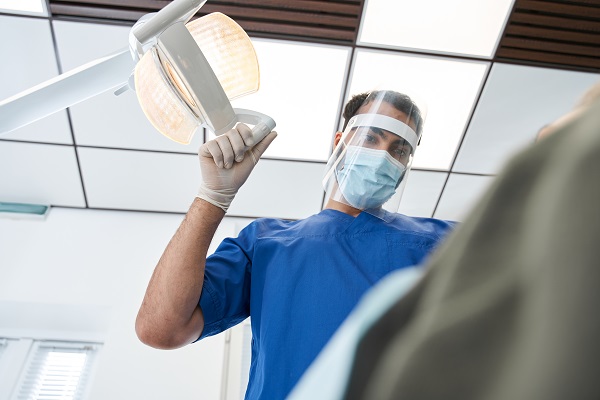What's the Difference Between a Direct and an Indirect Dental Restoration?

Direct and indirect dental restorations are the two types of restorations available. When your teeth are broken, chipped, decayed or cracked, dental restoration procedures restore the teeth to their original state. The choice of the type of restoration depends on the nature and severity of the tooth problem.
Direct vs. indirect dental restorations
Read on to find out the main differences between direct and indirect dental restorations.
Direct dental restorations
Direct restorations are options that can be completed in a single procedure during a dental office visit. Tooth filling for cavities is the most common direct dental restoration procedure. The dentist will determine the right filling for the patient based on preferences and the position of the tooth within the mouth. Direct dental restorations are generally easy and straightforward, and they are used for correcting minor dental issues.
Indirect dental restorations
Indirect dental restorations entail multiple complex procedures to treat a dental problem. Therefore, these procedures usually require multiple appointments with a dentist. Common procedures in this category include crowns, veneers, bridges, dentures, implants, inlays and onlays. The patient may need to undergo x-ray scans and have their dental impression taken.
Indirect tooth restorations involve parts that are produced by a dental laboratory. The dental lab can be inside the dental office or offsite. It is the process of producing the required restoration that necessitates multiple trips to the dental office. As the patient waits for the completion of the dental restoration, the dentist will provide a temporary option to prevent further damage or dental problems.
When the patient's dental restoration is available, the dentist will affix it in place to complete the restoration procedure. With advancements in dental technology, including the use of CAD and CEREC machines and 3D imaging, some dental restorations can now be completed in a single visit.
Choosing the right option
Both dental restoration options ensure patients get the required solution to their dental issues. Direct restorations are generally used when the patient's teeth are intact and in good enough condition to remain. Direct restorations sometimes require that a part of the tooth be trimmed off to create space for the restoration.
Indirect dental procedures are generally important for patients who have suffered extensive tooth decay or damage that may cause lost teeth. In some cases, a patient may need both direct and indirect dental restoration.
Practicing good oral hygiene and visiting the dentist regularly for checkups and cleaning can significantly reduce a person's need for dental restorations. Those who have not visited their dentist in a long time need to book an appointment as soon as possible. If the dentist detects dental issues early enough, the patient may not need a dental restoration and may be able to avoid complications that may result in extensive dental procedures.
Final note
If you have dental issues and need to undergo a dental restoration procedure, ensure you book an appointment with a dentist. The dental professional will evaluate your condition and determine whether direct or indirect restoration would be the best way to restore your smile.
Request an appointment here: http://www.hendersonfamilydentistry.com or call Henderson Family Dentistry at (903) 657-3139 for an appointment in our Henderson office.
Check out what others are saying about our dental services on Google: Dental Restorations in Henderson, TX.
Related Posts
Dental restoration is more common now than it ever was before. Patients can walk in and out of the dental office and, within an hour, are back to their lives like nothing ever happened. Dental procedures are not painful, and they cause much less stress and anxiety on the patient. Dental procedures can relieve our pain…
Dental restorations can be used to rebuild and restore the function of damaged teeth. They can also be used to restore the aesthetics of damaged teeth. Tooth decay is one of the main reasons teeth become damaged, but other factors like trauma to the face or habits like nail biting or teeth grinding can lead…
Wondering whether there is anything you can do to avoid getting a cracked tooth? Read on to learn about what habits can lead to cracking a tooth. Some instances of cracked teeth are simply unpreventable, such as enduring a blow to the mouth during a car accident or from a hard and unavoidable fall. However,…
The term, “dental restoration,” encompasses a variety of procedures from which anyone, not just individuals with missing or broken teeth, can benefit. Restorative dentistry may entail filling a tooth, placing a crown, installing a bridge, or replacing missing teeth. Due to the broad definition of the term, many people wonder when a dental restoration is…
